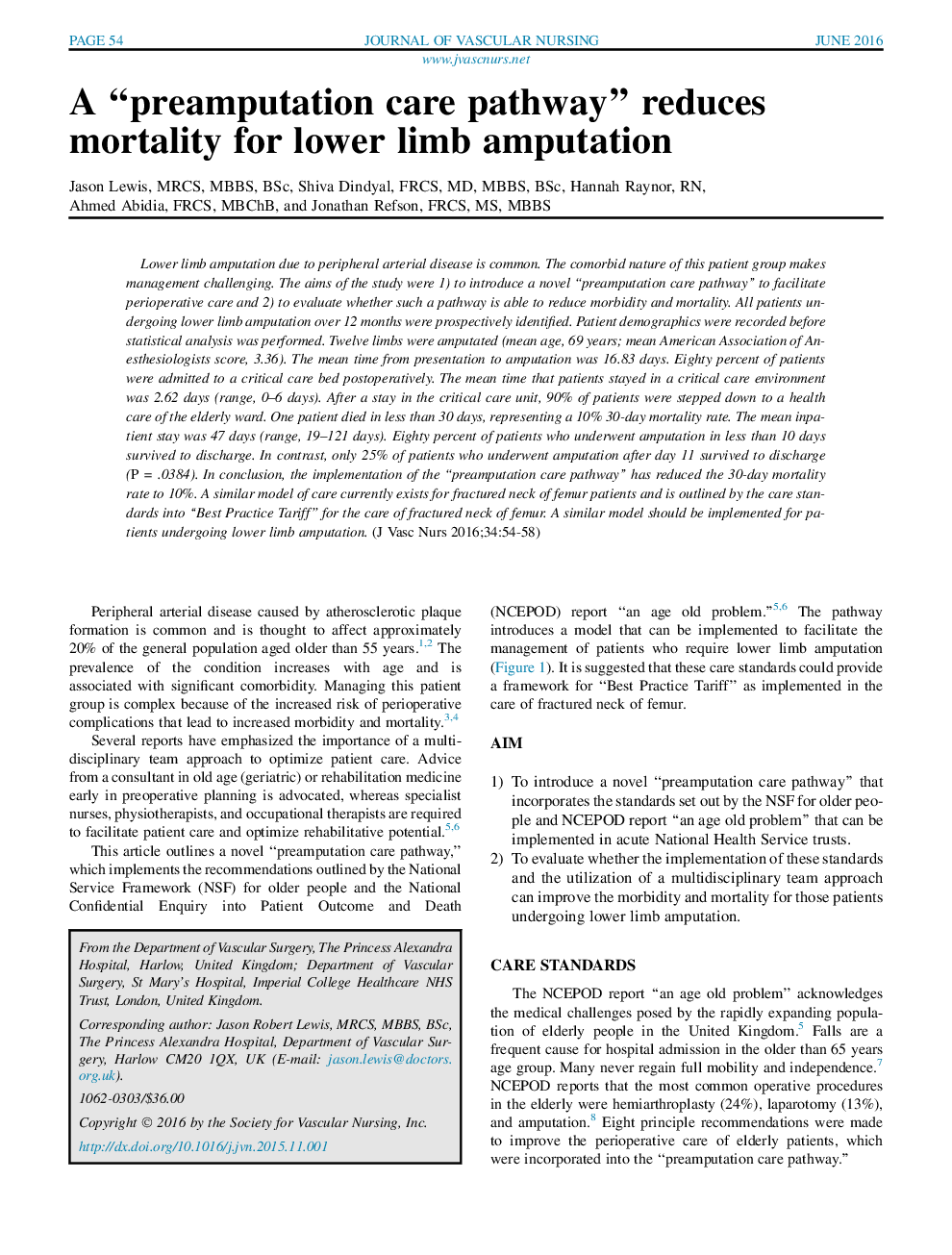| Article ID | Journal | Published Year | Pages | File Type |
|---|---|---|---|---|
| 2672442 | Journal of Vascular Nursing | 2016 | 5 Pages |
•Peripheral Arterial Disease (PAD) is common and management of the condition challenging.•Eight recommendations made by two key organisations (NSF and NCEPOD) improve the care of amputees.•The “preamputation care pathway” implements these recommendations.•The pathway has reduced mortality from 40% to 10% over the study period.
Lower limb amputation due to peripheral arterial disease is common. The comorbid nature of this patient group makes management challenging. The aims of the study were 1) to introduce a novel “preamputation care pathway” to facilitate perioperative care and 2) to evaluate whether such a pathway is able to reduce morbidity and mortality. All patients undergoing lower limb amputation over 12 months were prospectively identified. Patient demographics were recorded before statistical analysis was performed. Twelve limbs were amputated (mean age, 69 years; mean American Association of Anesthesiologists score, 3.36). The mean time from presentation to amputation was 16.83 days. Eighty percent of patients were admitted to a critical care bed postoperatively. The mean time that patients stayed in a critical care environment was 2.62 days (range, 0–6 days). After a stay in the critical care unit, 90% of patients were stepped down to a health care of the elderly ward. One patient died in less than 30 days, representing a 10% 30-day mortality rate. The mean inpatient stay was 47 days (range, 19–121 days). Eighty percent of patients who underwent amputation in less than 10 days survived to discharge. In contrast, only 25% of patients who underwent amputation after day 11 survived to discharge (P = .0384). In conclusion, the implementation of the “preamputation care pathway” has reduced the 30-day mortality rate to 10%. A similar model of care currently exists for fractured neck of femur patients and is outlined by the care standards into “Best Practice Tariff” for the care of fractured neck of femur. A similar model should be implemented for patients undergoing lower limb amputation.
